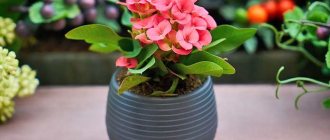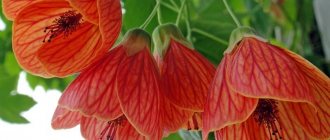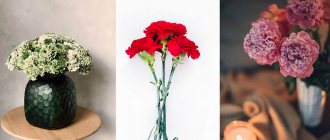List of links of all bookmakers
Hello beauty lovers.
Today on the women's site we will talk about indoor plants with white flowers. Beautiful flowering plants have always been especially popular among flower growers and simple connoisseurs of beauty.
And recently, flowers have begun to play the role of the finishing touch in interior design. Combinations of two colors have come into fashion: yellow and brown, red and black, but the most sophisticated solution is the interior in white and green tones.
No designer's imagination can surpass the harmony and perfection of a green indoor plant with white flowers and indoor plants with large leaves, beautiful by nature.
Gardenia is a low evergreen shrub of the Rubiaceae family, native to South Africa, India, and China. In nature, there are up to 250 species of this small tree.
Houseplant with white flowers – gardenia
The most popular among gardeners is the jasmine gardenia (Gardenia jasminoides). A bush with dark green glossy leaves, quite large, with depressed veins.
The flowers are white with a cream tint, collected in corymbose inflorescences, each containing 4–6 pieces or single, double and semi-double, 5–7 cm in diameter. The aroma is sweet, intense, with notes of jasmine.
At home, gardenia grows up to 45–50 cm. Flowering begins in July and continues until the end of October.
Gardenia is very demanding; it must be taken care of exclusively according to all the rules. But there are not many of them:
- slightly acidic or neutral soil;
- watering in a timely manner, without excess;
- mandatory spraying of water around the bush;
- temperature – strictly within the range of 16 to 22°C;
- a bright place, but at the same time protected from direct rays of the sun;
- After flowering, formative pruning is necessary.
Jasmine belongs to the olive family, common in Asia, Transcaucasia and northern China. Flowers of different species are white , yellow, and pink.
Houseplant with white flowers – jasmine
Jasmine (Jasminum officinale) has exceptionally white fragrant flowers - the most common species for growing at home.
The shape is a liana with gradually lignifying stems, the leaves are pinnate, the flowers are white, collected 5-6 in a racemose inflorescence. The diameter of the flowers is 2.5 cm. The plant blooms all summer, but only after reaching maturity.
Jasmine is quite unpretentious, he responds gratefully to care, and he doesn’t need much:
- a brightly lit place with shading during the hottest hours;
- watering is moderate, the soil should always be moist;
- regular spraying of leaves;
- The room temperature is moderate, jasmine prefers cool wintering (up to +7°C), and in the summer it prefers being in the fresh air;
- the soil for young plants is clay-turf with leaves and sand, for adults – clay-turf;
- time for transplantation is March.
White zephyranthes (Zephyranthes candida) is a member of the amaryllis family, common in Central and South America.
In nature, there are up to 40 species of zephyranthes. This plant is bulbous, perennial, with small round bulbs (3–4 cm in diameter).
Houseplant with white flowers – Zephyranthes alba
The leaves are narrow, belt-shaped, up to 30 cm long, 0.5 cm wide. Each peduncle (about 20 cm long) has a single flower. The perianth is funnel-shaped, about 6 cm in diameter, white on the inside, pinkish on the outside.
Blooms from July to October. For its special straight and tall peduncle, the plant was popularly called an upstart.
In order for the plant to enjoy normal growth and abundant flowering, several conditions must be met:
- the optimal temperature for zephyranthes is 17–23°C during the growing season, during the dormant period – 12–14°C;
- watering is moderate; if during the dormant period the plant begins to lose leaves, then watering should be stopped and the bulbs should be kept dry; if leaves remain, water occasionally;
- a well-lit sunny place, zephyranthes is not afraid of bright light and direct rays of the sun;
- in summer, in a room with dry air, you need to periodically spray the plant;
- replanting is often not recommended; this should be done in the spring, no more than once every 3–4 years or when the pot becomes too small;
- the soil should contain equal parts: clay-turf soil, leaf soil, peat, sand and humus.
Spathiphyllum (Spatiphyllum) - from the aroid family, it is also called the houseplant of female happiness. Distributed in South America, Polynesia, East Asia.
What houseplant is necessary for women's happiness?
It has a unique feature: under favorable conditions, flowering continues all year round. And for the first time, the flowering period begins at a very young age - at 6-7 months.
Spathiphyllum profusely flowering usually has an underground creeping stem and oblong-lanceolate leaves pointed at the end. Its peduncle reaches 25 cm in height, the inflorescences are cobs with a slightly concave veil of pure white color.
This indoor plant with white flowers requires favorable conditions. Here is a short list of them:
- loves warmth, the optimal range is from 22 to 26 ° C, occasionally necessary periods of rest at a lower temperature (14 ° C) lasting 2-3 weeks;
- it is advisable to isolate the plant from drafts;
- the lighting is bright, but at the same time diffused, shading from direct rays of the sun, additional lighting in winter;
- watering abundantly, more moderate in winter;
- regular spraying, flowers and buds should be covered,
- leaves need to be washed;
- The soil composition should contain two parts of turf soil and one part each of leaf soil, peat soil, humus soil and sand.
Eucharis , or otherwise - Amazonian lily. A member of the amaryllis family, native to tropical America. Eucharis is a bulbous plant with wide, leathery, dark green leaves.
Houseplant with white flowers – Eucharis.
The peduncle is tubular, tall, the buds are located at its top. Snow-white, fragrant flowers are collected in an umbrella of 3-6 pieces; their shape resembles a daffodil. It blooms twice a year: from October to cold winter and in spring. The dormant period continues from March to August.
Features of bulbous flowers
Bulbous house flowers (photos and names are given below in the article) decorate not only flower beds, gardens, gardens, but also residential premises.
Features of this category of plants are:
- in long-term cultivation;
- available instead of onion root;
- in annual flowering;
- with little maintenance.
The main criterion for successful further growth and flowering is the choice of high-quality planting material.
The best time to purchase flower bulbs, according to flower growers, is considered to be mid-summer - early autumn. Plants that have faded and formed a full-fledged root retire, leaving the bulbs to replenish their strength and accumulate nutrients for the next year.
The article contains photos and names of popular bulbous house flowers.
When purchasing planting material, you should pay careful attention to its visual inspection. The root bulbs should not show any damage of various origins, the structure should be dense and the weight should be heavy. This indicates a healthy, full-fledged future plant.
The presence of a clean, rot-free bottom indicates a sufficiently high level of root viability. If the buyer purchases a product for planting next year, then the bulb should not have roots or new stems. Their presence, even in small quantities, requires immediate planting in the ground.
It is enough to store the bulbs covered with dry scales in a ventilated area in an open state. Other specimens survive the winter better in plastic bags with holes for ventilation, filled with wet sawdust or peat.
Monday, September 7, 2015
Thomson's clerodendrum at home: how to grow a flower of innocent love
| Clerodendrum Thomson |
Thousands of kisses sound on my windowsill from spring to the end of summer. This amazing plant blooms - Thomson's Lerodendrum
(Clerodendrum thomsoniae), or innocent love flower. Its white flowers with a red center look like butterflies frozen on dark green foliage. I share my personal experience of maintaining this floristic miracle in this article.
The common name for all clerodendrums (clerodendrons) is “tree of destiny.” (As a matter of fact, this is how the name of this plant is translated from Greek). However, Thomson's green beauty received the affectionate nickname innocent love for the beauty of its red and white flowers. There is another version of the popular name for this green miracle - bloody heart. But it seems very sinister to me, and I don’t want to use it. After all, this phytobeauty deserves a more beautiful name - the flower of innocent love.
| Clerodendrum Thomson at home |
Thomson's clerodendrum is an amazing plant. As a rule, fading flowers make us sad, because looking at them we think about how fleeting Beauty is. But not in the case of this clerodendron! After all, as they wither, its petals transform – they no longer become white, but pink. And they look as impressive as they did in their heyday. Therefore, the flowers of this plant do not need to be trimmed until they dry out completely.
| Clerodendrum seeds |
By the way, you can often notice red formations with black tips in the cups of these pink petals. As a rule, these red and black “bubbles” are arranged in threes. These are clerodendrum seeds, which can easily start at home.
| Pink miracle |
At this time everything is simple. As I already said, this plant prefers sunlight without hot midday rays hitting its luxurious leaves. It also responds well to access to fresh air. It is very good to ventilate the room where the flower of innocent love grows. But be careful! The wind can blow fluff and bird feathers, to which pests can attach. For example, thrips. The appearance of bugs and other enemies of clerodendrum is eliminated with the help of special pest control sticks.
“Do you want it to bloom? – the florist who handed me this plant asked me, “Then prune it more often!” Indeed, pruning stimulates the formation of buds. By the way, this clerodendron is actually a liana. But with frequent pruning, its stems tend to become woody. As a result, we get a wonderful flowering tree on the windowsill.
During this period, the plant may even shed its leaves. However, such leaf fall is natural for it. Green wealth will grow again in the spring. In addition, at the end of February - beginning of March (when the plant emerges from hibernation), it is recommended to give the plant stimulating pruning. Cuttings can be rooted in water. Contrary to popular belief, root formation occurs easily. I rooted clerodendron even in the autumn.
The innocent love flower usually blooms in the spring. But last year it also bloomed in the fall.
PS I also supplemented my article with a video where I tell you how to care for this floral miracle:
Enjoy watching everyone and I will be grateful for subscribing to my blog and video channel!
When decorating flower beds, rock gardens, edgings, framing lawns, we try to select garden flowers that are easy to care for. Especially if these are flowers for the garden. There is usually more than enough work; there is not always enough strength for capricious plants. We will publish a selection of beautiful and varied flowers with different flowering periods - from early spring to late autumn. All you have to do is choose according to your taste and color.
Selecting flowers for your garden so that they bloom all season long is an art.
Perennial bulbous flowers for the garden
Bulbous house flowers, photos and names of which are presented below, are garden plants. Their different flowering times make it possible to provide flower beds with constant beauty and variety.
Early perennials
A wide variety of garden bulbous representatives welcome spring.
Among them:
- snowdrops,
- tulips,
- daffodils,
- hyacinths,
- white flowers,
- crocuses,
- scillas,
- Pushkinia,
- iridodictium,
- chionodoxa,
- muscari,
- poultry farmer.
But each of them has its own flowering period. Therefore, thoughtful and correct planting of different types of spring garden flowers will allow you to preserve a blooming plantation until the fall.
Snowdrops
The earliest of the listed flowers are snowdrops. They make their way practically from under the snow, which has not yet melted in the thawed patches of the garden. Their frost resistance, which allows them to withstand temperatures down to -10°C, ensures superiority among other spring plants.
Blooming from April to May, and in early spring and early March, they create wonderful landscapes with their soft lilac buds on short stems and pointed bright green leaves. The light aroma emanating from meadows with snowdrops enchants with splendor. Currently, scientists have managed to develop more than 250 hybrids based on 17 varieties of these primroses.
Chionodoxa
Following the snowdrops, Chionodoxa comes into view. Its dense inflorescences, reaching towards the sun and consisting of 10-15 flowers, cover almost the entire planted area with an unusually beautiful soft blue or dark blue carpet.
Among it, spiky leaves growing simultaneously with flowers flash like original green dots. The most popular variety among consumers is Lucilia. It is determined by the darker shade of the inflorescences.
Whiteflower
During the last stage of snowdrop flowering, they are replaced by white flowers. Their name indicates the color of the buds, which may contain greenish or yellow inclusions near the place where the petals are attached. Unlike previous primroses, the buds of whiteflowers are drooping and located on high stems.
Along with the appearance of flowers, long linear leaves of a rich green hue also grow. These plants cease their vital activity by the beginning of summer, along with the entire ground part.
Due to the presence of brown scales on the root bulbs, they winter well without additional packaging. Depending on the variety, white flowers bloom in spring or summer.
Crocuses
The flowering of this primrose coincides with previous representatives and begins at the end of April and continues until the end of May. Low bushes with upright tassels brightly colored in various shades on dense stems are truly a decoration for any flowerbed or garden.
Glossy lance-shaped leaves with a dark color that appear during budding and flowering add a unique contrast to the overall color picture. Each adult crocus bulb is capable of producing up to three arrows with buds.
Thanks to breeders, both spring-flowering and autumn-flowering hybrids were bred.
Iridodictium
Almost at the same time as snowdrops and crocuses, iridodictium begins to bloom. Like butterflies perched on stems, these plants delight everyone around them. What makes them especially unusual is the dotted or dashed inclusions of red, white, green colors on the purple, blue or bluish background of the petals.
Following the buds, iridodictum leaves appear on the ground surface. A distinctive feature of the bulbs of this plant is the presence of a mesh shell. At the moment, this representative has 12 varieties.
Hyacinths
Also beautiful flowering spring plants are hyacinths. The buds that bloom in April exude an incredibly pleasant aroma, and their varied colors in the form of orange, snow-white, green, blue flowers of a dense or loose structure provide pomp and solemnity to the garden.
The advantage of hyacinth bulbs is the duration of their fruiting, which in most cases reaches up to 15 years.
Daffodils
Daffodil flowers are one of the most common types of bulbous houseplants. Further, the presented photos and names indicate the diversity of their appearance. Due to the undemanding nature of growing conditions, as well as the toxicity of the bulbs, their widespread use is completely justified.
Daffodils have a bush-like appearance with erect, linear leaves growing straight from the bulb. Each of them is capable of producing up to 10 flowers. The variety of colors of modern varieties is not so great and is limited to pure yellow, white-yellow, white or orange-crowned buds.
Tulips
Tulips turned out to be perfectly acclimatized in the regions of Russia. Modern gardeners and flower growers can no longer imagine their flower beds without these bright, varied and beautiful plants. Being their homeland, Holland annually supplies many bulbs of various varieties to all countries of the world.
Thanks to breeding scientists, tulips were bred, the flowering period of which lasts from May to July. In total, there are more than 15 thousand species of these heralds of spring.
But not all climate zones are suitable for growing these plants. Thus, in the subtropics, their normal development is hampered by a constant mild climate. And to activate vegetative growth, a periodic decrease in ambient temperature is necessary.
Summer period
The summer season is also marked by a large number of beautifully blooming bulbous representatives.
Lilies
The most common of them are garden lilies. The variety of their colors allows you to create a rainbow “carpet” of plants of the same name. Numerous new varieties bred by breeders amaze the imagination with their magnificence of shape and shades.
Different types of lilies planted according to a certain pattern will give the flowerbed a unique charm and beauty. But, due to the fact that during flowering the stem of these plants turns yellow and sheds their leaves, experienced gardeners recommend diluting their plantings with shorter representatives of the flora in order to hide such minor shortcomings.
Daylilies
Only a few species of this beautiful plant are grown in Russia. In China, it is of great interest, as it is used in medicine and cooking as a vitamin supplement.
With their simple, but very beautiful large flowers in terms of colors, daylilies attract many admirers and gardeners, but only a few dare to plant these capricious representatives of bulbous plants on their plot.
But if planting has been carried out, then with proper care these beauties will delight their owners with magnificent and fragrant flowering for a long time.
Tigridia
This is one of the rare representatives of bulbous plants and is exotic for Russian territories. But due to the splendor, decorativeness, unusual shape of the inflorescences, as well as unpretentiousness in cultivation, it is increasingly interested in domestic flower growers.
The period of growth and blossoming of buds is from July and continues until autumn frosts. Although each of them pleases with its beauty for only 8-10 hours, thanks to their large number on one stem, the replacement of faded flowers occurs gradually. In total, the list of breeding varieties of Tigridia includes about 50 species.
For the autumn flower bed
Bulbous house flowers, photos and names of which are shown below, are autumn representatives. Among them are gladioli, cannas, tuberoses and others.
Gladioli
The brightest autumn flowers are gladioli. Their grace and splendor attract everyone's attention, and the variety of shades and shapes allows you to create unique designer landscapes of flower beds and plots.
In total, the number of varieties of these representatives is about 200. They delight others with their beautiful flowering from mid-summer to the end of September, depending on the chosen variety.
Cannes
Canna is considered a full-fledged autumn beauty. Large, powerful plants with beautiful glossy leaves of various colors cover the surface of a flowerbed or garden plot with a dense carpet. And unusual flowers, collected several times in inflorescences on a high peduncle, delight with their splendor for a long time.
The high consumer demand for canna bulbs is due to their unpretentiousness to soil and care. Currently, 50 varieties of canna are known.
Tuberoses
These autumn representatives are quite capricious and not every experienced gardener will decide to grow them.
But with proper care and provision of comfortable conditions, tuberoses will reward the gardener with abundant and pleasantly fragrant flowering for a long period. The aroma intensifies especially towards evening.
Planting and care features for bulbous plants
Planting and caring for bulbous specimens have their own varietal characteristics, but the general conditions can be listed as follows:
- Before planting the bulbs in the ground, it is necessary to soak them for a while in any antifungal solution to eliminate the possibility of infection.
- It is recommended to place planting material in the soil in late September - early October. In regions with warm autumns, planting can be extended until early November, but no more.
- Soil preparation involves deep digging and adding compost. It should be well drained.
- After placing the bulbs in the ground, the planting site must be compacted so as not to damage the roots in the future when the soil settles under the influence of precipitation.
- The planting depth of the material depends on its size. Usually this distance is equal to 3 times the height of the bulb itself. It roughly looks like this:
- for very large ones – up to 25 cm;
- for large ones – from 15 to 20 cm;
- for small ones - from 5 to 10 cm.
All planting material is placed in the hole with the bottom down.
The first fertilizing should be done in the spring in the form of complex mineral fertilizers. The most effective application would be in liquid form. Bulbous plants are transplanted as needed.
The period of formation of children by bulbs is different for each species. Therefore, fast-growing specimens require more frequent replanting, since thickened young growth prevents other specimens from growing and blooming.
Young rhizomes are dug up only after the above-ground part of the bush has completely died off. The extracted material must be cleaned and placed in a ventilated area in one layer to dry. To avoid contamination of the newly received seed with diseases remaining in the ground, it is recommended to move it to a new location.
The variety of bulbous house flowers can easily decorate any landscaped area of a garden or summer cottage. The photos and names of plants that bloom from spring to autumn presented in the article will help in design, and will also provide unique beauty and a riot of colors for a long time.
Spring bloom
There are very early flowers that delight us before the grass even appears. What is noteworthy is that they are very unpretentious and require almost no maintenance. Well-known spring flowers for the garden are daffodils and tulips. They are very diverse and beautiful, but there are many others that are no less interesting.
Spring flowers - traditional and not so
Snowdrops
These small bulbous plants bloom with delicate white flowers and are known to everyone. The correct name is Galanthus nivalis. They appear immediately after the snow melts, bloom in just a couple of weeks, but the flowering is very short-lived. After the end of the flowering season, the above-ground part dies off. It is recommended to plant near shrubs and trees.
There are about two dozen varieties in total, here are the most interesting and popular:
- Viridapisis. A taller variety. Blooms in February-March. The leaves are grayish-green, flat. Their length is about 10 cm. The flower is white, drooping, 1-3 cm long. There are green spots on the edges of the inner petals.
- Lutescens. It differs in that the inner petals have yellow spots. This variety of snowdrops is capricious - not all soils are suitable for it.
Snowdrops are the earliest flowers for the garden
There are also blue snowdrops. This is another type of flower - Scilla (scilla), but more often they are called Scilla. They are more fragile in appearance and bloom a little later - in April. They tolerate winter well, are unpretentious, and can grow on heavy fertilized soils. In order for them to bloom in the spring, you need to feed them with nitrophoska. Common varieties:
- Siberian scilla. The leaves are basal, wide, bright green. Produces tall peduncles 10-12 cm high, on which there are from 1 to 5 blue-blue drooping flowers. Early flowering - 10-15 days after the snow melts. There is a white subspecies with later flowering.
How to create ideal growing conditions?
Most bulbous plants love plenty of light. Thus, Albuka prefers to bloom in diffused light or light shade. Colchicum and Hemanthus bloom actively when they are in the shade; the most suitable place for them is a window that faces south.
All bulbous plants are sensitive to excessive watering and dry air. These factors should definitely be taken into account when creating conditions for their growth. If certain conditions are not met, the stems become soft, dry out, and flowering becomes scarcer or disappears altogether. A stable temperature improves their growth, while fluctuations, on the contrary, slow them down.
Basic conditions for good growth of bulbous plants:
- avoid exposure to direct sunlight;
- there is no need to create artificial lighting just to speed up the flowering process;
- provide moderate watering and optimal humidity;
- the air temperature during the rest period should not exceed +13 °C;
- for active growth it is necessary to maintain a temperature range from + 15 to +25 ° C.
Attention! Dry air is an ideal condition for the reproduction of most parasitic insects. Sufficient humidity will ensure the prevention of infection of bulbous flowers by various types of aphids, spider mites and scale insects.
Summer flowers
Summer is the most fertile time. The choice here can make your head spin. There are thousands of names, and they are all interesting in their own way. It’s very difficult to choose, but we tried to find decent options.
Summer is the time when the dacha is full of flowers
Dicentra - Broken Heart
The bright, unusually shaped flower of Dicentra became the reason for its no less unusual name and many legends relating to matters of the heart - Broken Heart. These are bright, tall flowers for the garden - up to 1 meter tall, attracting attention in mid-spring. There are 8 species, often found:
- Dicentra spectabilis. It blooms for a month, does not like nearby groundwater and summer drought. The plant is up to 1 meter tall, the leaves are green above, bluish below, large, pinnate. On a high arched peduncle there are bright pink large flowers - up to 3 cm in diameter. There is a white hybrid (Alba), a very interesting variety is Gold Heart (Gold Heart) - it has golden leaves.
Autumn flowering period
In order for the flowerbed to please you until the coldest weather, you must remember to plant flowers with an autumn flowering period. There are not very many unpretentious flowers with such late flowering, but they are no less decorative.
Autumn flowers for the garden are not so numerous
Crocuses
We are accustomed to the fact that crocuses are primroses. But this flower also has autumn forms. Moreover, they are larger and no less decorative.
- Beautiful crocus (Crocus speciosus). The leaves are bright green with purple longitudinal veins and can reach a length of 20 cm. The flowers are lilac-violet with purple veins. The flowers are large, up to 7 cm in diameter. They bloom in autumn. There are varieties with dark blue, white, lilac, light purple, and blue flowers.
Autumn crocuses are one of the most interesting options for rockeries, ridges
General recommendations for caring for bulbous plants
Plants of the bulbous genus are not picky in their care. Even a novice gardener can take care of them. The main thing is to follow the general recommendations and rules:
- from April to September, the room temperature must be maintained from +20 to +25 °C, in winter – from +10 to +14 °C;
- monitor air humidity;
- carry out moderate watering 2-3 times a week, during the dormant period – once every 7-10 days;
- avoid waterlogging of the soil;
- fertilize in a timely manner;
- provide good lighting.
Attention! Caring for bulbous flowers includes regular inspection of them for the presence of fungal infections of the leaves and the appearance of parasitic insects.
Planting and transplanting
Active growth and abundant flowering of plants of the bulbous family directly depend on the quality of planting material. The best period for planting them is September-October. Before starting this activity, you should inspect the bulbs for damage. The planting material must be strong and free from any damage.
Planting includes several stages, including:
- disinfection of bulbs. An important point that is not recommended to be missed. This will help avoid rotting of the bulbs and protect them from damage by insects. Place the bulbs in a 1% solution of potassium permanganate and leave for at least half an hour;
- choosing a pot. The flowerpot should be larger than the bulb, but not by much. This condition should be observed as it affects the flowering of the plant. If a large pot is selected, children will develop, but flowering will not occur;
- preparation of planting material. The flowerpot must have holes for drainage. If you don't have them, you definitely need to do them. Place expanded clay, pebbles, and small stones in the first layer on the bottom of the pot. Such drainage prevents rotting of the bulbs;
- landing. The drainage needs to be covered with sphagnum; if it is not there, you can use charcoal. The next layer is soil, into which you need to carefully place the onion, treated in a solution of potassium permanganate, and sprinkle it with earth. It is not recommended to bury the bulb - this may negatively affect its germination;
- Water the soil moderately and place the pot in a cool place. When the leaves appear, place the flowerpot in a bright room with a temperature of +20 to +25 °C.
Loose soil is recommended for transplanting bulbous plants. You can purchase it or prepare it yourself. Soil from a specialized store contains the necessary substances and microelements and meets all requirements. You can avoid injury to the root system by using the transshipment method.
Peculiarity! Adult plants need to be replanted once every 2-3 years, young plants - annually (into a larger pot). When roots are visible from the drainage hole, this indicates that there is not enough space for them and the flower needs urgent replanting.
Watering and fertilizing
Each type of bulbous plant requires certain rules for watering and feeding. Some plants like moisture, others like drought. The frequency and abundance of moisture depend on both the species and the age of the flower. Before caring for your chosen plant, you should carefully study what fertilizers to use and how to properly moisten the soil.
According to experienced gardeners, certain types of bulbous plants do not need watering during the dormant period. However, other plants should be watered no more than once a week. In this case, you need to reduce the volume of water several times - this will prevent the bulbs from drying out.
Normal watering should be introduced at the beginning of the growing season. But even during this period, moderate moisture is required - the flower must gradually get used to changing the watering regime. Regular watering (as in summer) should be restored only after active leaf growth.
During irrigation, you must adhere to the following rules:
- use only soft water at room temperature, ideally rain or melt water;
- pour water close to the walls of the flowerpot. This is necessary to ensure that the liquid does not get on the stem, leaves and bulb;
- water for irrigation should be heated to a temperature of +20-23 °C;
- during the period of active growth, bulbous flowers must be watered twice a day;
- Water should be added to the pot in doses, checking the degree of soil moisture. If there is excess moisture in the pan, it must be removed immediately to avoid rotting of the bulb.
Attention! Experienced gardeners recommend remembering the basic requirements for watering: abundant irrigation only during the period of active growth, during the dormant period - complete cessation or reduction in the frequency of watering. Irrigating flowers in a tray (bottom watering) will protect the bulbs from rotting and the soil from becoming waterlogged.
As for fertilizers, when feeding flowers of the bulbous family, the relevant rule is that it is better to underfeed than to overfeed. Bulbous plants need the following elements:
- potassium. This trace element is vital for all species of this family. It has a beneficial effect on the formation of buds and the flowering period;
- phosphorus. The correct formation of flower stalks and their growth directly depend on the amount of this element in the soil;
- nitrogen. The lack of this chemical affects the number of leaves and their growth rate.
Lack of fertilizer reduces the growth and flowering period of the flower. The first feeding is necessary immediately after the shoots appear, then in the fall, when leaf growth stops, and the last one before the dormant period.
For fertilizer, it is best to use ready-made complex fertilizers, which include a balanced composition of essential microelements and other nutrients.
Bulb dormancy period
The definition of “rest period” means a state in which all physiological processes slow down significantly, and in some cases stop altogether. This is manifested by the absence of leaves, shoots, and peduncles. This period is typical for many bulbous species; it is characterized by complete loss of foliage.
During the dormant period, it is necessary to change the care of the bulbs; it should include the following measures:
- stopping feeding;
- reducing the volume and frequency of irrigation;
- placing the flower in a room where the temperature does not exceed + 13 °C;
- during the dormant period, place flowerpots with tubers in a dark place;
- As daylight hours increase, plant the tubers with sprouts in the ground and place them in a bright place;
- introduce fertilizing and gradually increase the volume of water.
The dormant period is different for each species, but in general it comes down to a complete cessation of fertilizing and storing the bulbs in a shaded, cool room. Some species retain leaves during the dormant period.











